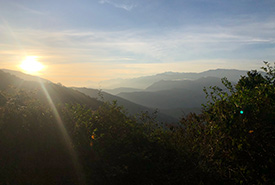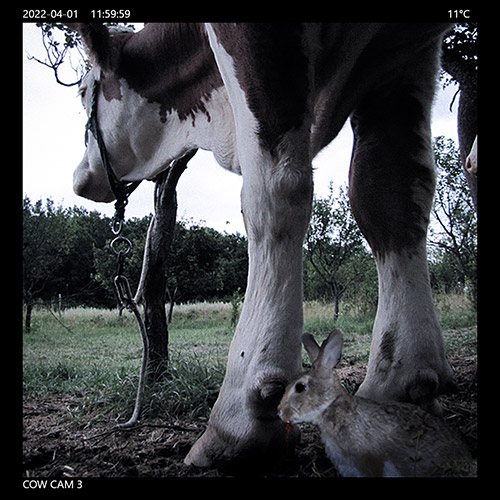NCC: Land Lines – The wonder of new discoveries

Sierra Nevada de Santa Maria, Colombia (Photo by Mark Stabb/NCC staff)
It is heartening to know that there are pockets of the planet where, with the right eyes, new natural history discoveries are waiting to be made. I recently had the privilege of visiting the Republic of Colombia for a two-week birdwatching and nature-watching tour. Our local guide there shared one such discovery he had heard about from a remote corner of that vast country.
Colombia is roughly the size of the province of Ontario but is home to almost four times the bird species. More than 1,900 bird species in all — roughly 20 per cent of the world’s birds — are known to reside there for at least part of the year. The habitat diversity, including multiple ranges of the Andes, two ocean coasts and great river basins, is immense, so many species numbers are similarly diverse, with many found only in Colombia.
The discovery was made in the northwest of the country where researchers studying the feeding behaviour of bats — vampire bats in particular — were monitoring trail cameras set up around local cattle herds. Vampire bats drink blood from small incisions made around the animals’ hooves, with their saliva having anti-coagulant and anesthetic properties that make it a harmless experience for the prey.
A graduate student studying the images came across a surprise visitor to these wounds: a population of the common tapeti, South America’s forest cottontail rabbit. On numerous occasions, the researchers documented the small rabbits visiting the wounds created by the bats and lapping up the blood. This highly unusual behaviour, for an herbivore, may be in response to widespread land clearing, which may have eliminated a particular plant species that provided an essential nutrient or mineral (perhaps iron) for the local rabbit population.
Interestingly, hares (a closely related species) have also exhibited non-herbivorous behaviour. A 2018 report found that Canadian snowshoe hares actually scavenge carcasses of animals (even of other snowshoe hares — yuk), particularly in winter when protein sources are rare. Canadian hares are cannibals and eat meat, surprising photos reveal (nationalgeographic.com). The Colombian observation of the “vampire rabbits” feeding on live animals is the first known to science and is to be published in the Journal of Mammalogy later in 2023.
Unfortunately, local ranchers have been relentlessly shooting and snaring the rabbits, thinking that their feeding (along with the bat feeding) causes harm to the cattle. The cattle are not actually harmed; the small wounds are more like a large-ish insect bites. A regional conservation agency informed of the unique ecological finding started an innovative awareness campaign aimed at improving understanding of the rabbit’s harmless behaviour and the significant nature of the finding.

Captured on the cow cam, an unsuspecting cow being preyed upon by a vampire rabbit (Photo by NCC)
The “Hacer las paces con los conejos vampiros” campaign was born, using the familiar hand peace sign in its messaging. In this case, the two extended fingers represent the ears of the tapetí, with the curled fingers representing the front teeth. “Make peace with the rabbits” posters were placed along roadsides, and even street artists from Bogota were flown in to paint the signs on walls of willing homeowners. It is too early to determine if the awareness campaign is having a positive impact.
In the meantime, to immerse yourself in the story, try making the peace sign yourself. Then slowly cross the two extended fingers and realize, as you probably have already, that the vampire rabbit is a (brand new) myth. Happy April Fool’s Day! 😁
Epilogue: Colombia has some of the most amazing biodiversity on the planet, but the country is not often the first place that comes to mind for ecotourism. Colombia is currently at peace, and its people are moving ahead out of a history of horrendous political and social turmoil. The nation is turning in part to its natural heritage as one way to build collective internal pride in the country. And it is also building a tourism industry that welcomes visitors and inspires stories — and maybe even new discoveries — like the one above.




